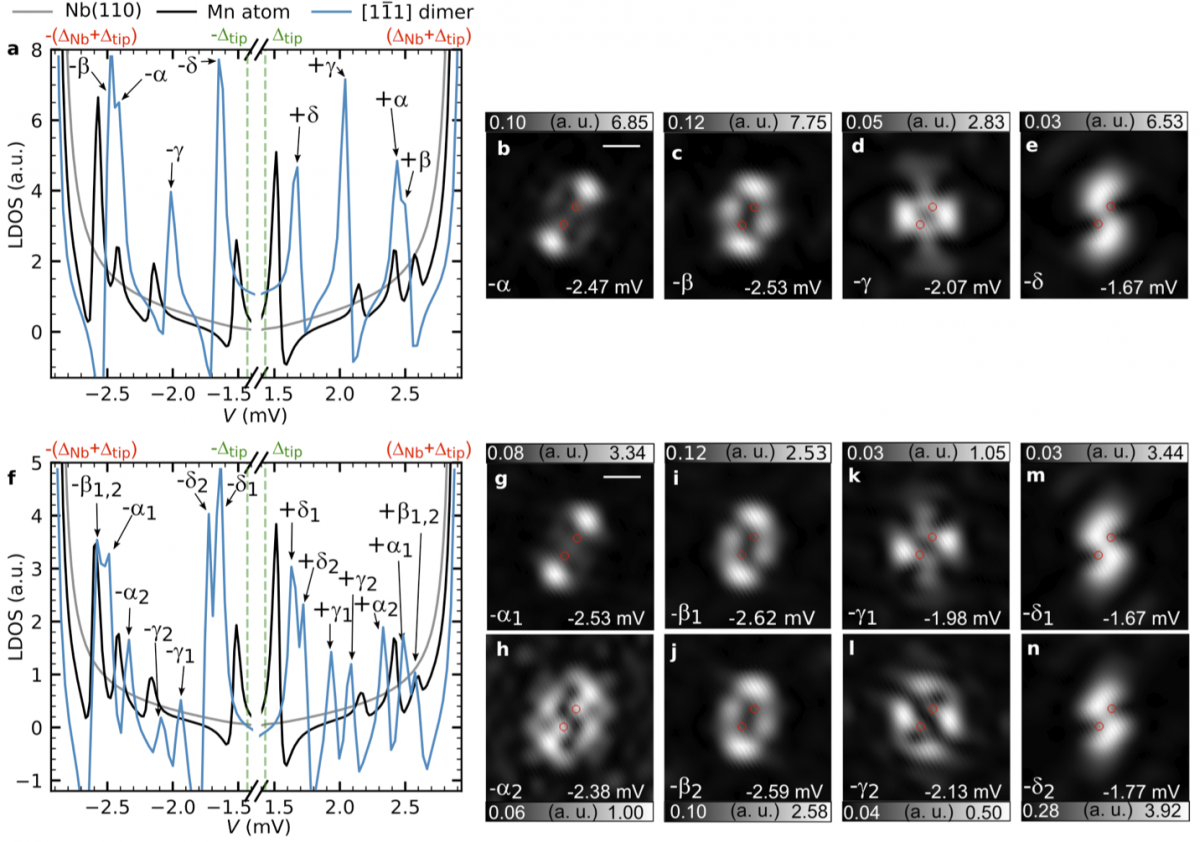2021. April 18.
Our colleagues' new results may enable the creation and experimental investigation of topologically protected quantum states. Published in Nature Communications.
Philip Beck, Lucas Schneider, Levente Rózsa, Krisztián Palotás, András Lászlóffy, László Szunyogh, Jens Wiebe & Roland Wiesendanger
Spin-orbit coupling induced splitting of Yu-Shiba-Rusinov states in antiferromagnetic dimers
Nature Communications volume 12, Article number: 2040 (2021)
https://www.nature.com/articles/s41467-021-22261-6
A new step towards quantum technology: novel quantum states at superconducting surfaces induced by magnetic nanostructures
Fabrication of hybrid magnet-superconductor systems at the atomic scale opens the way for new types of applications in quantum technology. Near magnetic impurities embedded in superconductors, so-called Yu-Shiba-Rusinov (YSR) states arise, forming the building blocks of topological quantum states in nanomagnet-superconductor systems. In collaboration with an experimental research group of the Hamburg University, researchers of our University, Krisztián Palotás, András Lászlóffy and László Szunyogh, as well as Levente Rózsa (Konstanz University), a former student of the BME, successfully contributed to the theoretical understanding of the YSR states induced by manganese adatoms placed on the surface of superconducting niobium. Their recent study focused on the investigation of the YSR states of ferromagnetically (FM) and antiferromagnetically (AFM) coupled manganese dimers and, for the first time, it was experimentally shown that the atomic YSR states are split not only for the FM-coupled, but also for the AFM-coupled dimers. In former studies it was concluded that the presence of split YSR states excludes AFM-coupling in the magnetic dimers. In view of the present discovery these experiments should be revisited. Theoretical considerations and numerical simulations uniquely confirm that the observed splitting of the YSR states in the AFM-coupled dimers is the consequence of the interaction between the electrons’ spin and orbital moments, referred to as the spin-orbit coupling, in combination with the missing inversion symmetry at the surface. The results presented in Nature Communications (Nature Communications 12, 2040 (2021)) put forward the possibility of forming YSR bands in AFM-coupled chains, opening a new way of realizing qubits for topological quantum computing.

Figure: Hybridized YSR states in AFM Mn dimer on Nb(110) obtained from numerical simulations. The blue curves to the left display the densities of YSR states (α, β, γ, δ) in the superconducting gap of Nb. The spatial extent of the YSR states is presented to the right: without spin-orbit coupling there is no splitting of the YSR states (upper panel), while in the presence of spin-orbit coupling they are split (lower panels, α1, α2 etc.) Source: Nature Communications 12, 2040 (2021).


